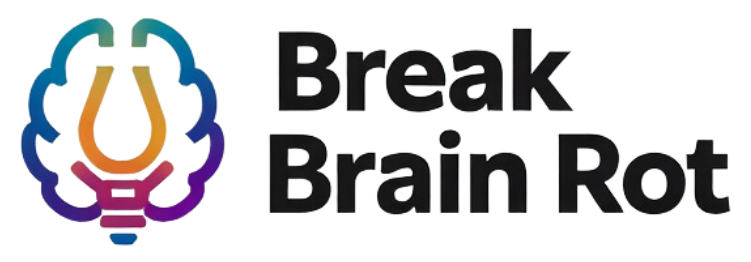**1. Analyze the article title and focus keyword**
– **Title:** “Social media detox challenge examples for a happier mind” – focuses on practical inspiration and emotional payoff.
– **Focus Keyword:** social media detox challenge examples
– **Usage Plan:** Use the focus keyword in the introduction (within the first 100 words), the H2 heading “Simple Social Media Detox Challenge Examples to Start With,” and a few more times across the article in natural contexts.
– **Synonyms and Related Terms:** digital detox activities, social media break ideas, social detox tips, social media cleanse, screen time reduction challenge.
– **Keyword Variations:**
1. examples of social media detox challenges
2. social media detox ideas
3. how to do a social media detox challenge
4. social media cleanse ideas
5. digital detox challenge examples
6. simple social media challenge ideas
7. best social media detox challenge
—
**2. Review the outline and plan article structure**
| Section | Word Count Estimate | Notes/Subsections |
|———-|——————–|——————|
| Introduction | 150 | Hook, importance, overview |
| Why a Social Media Detox Matters | 250 | Subsections: Impact on mental health, Signs you need a detox, Benefits |
| Simple Social Media Detox Challenge Examples | 250 | Subsections: 24-hour challenge, Unfollow challenge, Screen-free mornings |
| Weekly and Monthly Social Media Detox Challenge Plans | 200 | Subsections: 7-day plan, 30-day reset, hybrid detox |
| Real-Life Success Stories and How to Stay Consistent | 150 | Subsections: Testimonials, Overcoming struggles, Accountability |
| Tools and Resources for a Successful Detox | 100 | Subsections: Apps, Offline alternatives, Resources |
| FAQs | 70 | 5-7 common questions |
| Conclusion | 80 | Summary + CTA |
Total ≈ 1200 words.
**Flow logic:** Starts with “why,” followed by “how,” then real examples, success stories, support tools, and finishes with FAQs and motivation.
—
**3. Brainstorm secondary keywords**
– digital detox tips
– social media balance
– screen time management
– social media wellness
– healthy phone habits
– mental clarity
– mindful technology use
– social media overuse
– break from social media
– disconnect to reconnect
—
**4. Plan introduction and conclusion**
**Introduction Key Points:**
– Hook with a relatable moment (morning scroll).
– Present overload issue.
– Introduce the concept of social media detox.
– Mention focus keyword.
– Promise actionable ideas and clear results.
**Conclusion Outline:**
– Reiterate benefits of detox.
– Encourage small first steps.
– Use motivating final line and CTA: link to “Step-by-Step Guide to a Digital Detox.”
—
**5. Potential FAQ questions**
1. What are some easy social media detox challenge examples for beginners?
2. How do I know when a digital detox is necessary?
3. Can I do a social media detox without deleting my accounts?
4. How long should a social media detox last?
5. What are the signs a social media detox challenge is working?
6. How do I stay consistent with my detox?
7. What can I do instead of using social media?
8. How can I convince friends to join my detox challenge?
—
**6. Keyword incorporation strategy**
– Focus keyword: intro, “Simple Social Media Detox Challenge” section title, FAQs, conclusion.
– Primary keyword “Social media detox challenge ideas”: intro, “Benefits” section, “Weekly challenge” section.
– Secondary keywords: sprinkled within each section discussing balance, wellbeing, mindfulness, and productivity.
—
**7. Detailed content outline**
1. **Introduction (150 words)** – Hook + purpose + focus keyword.
2. **Why a Social Media Detox Matters (250 words)**
– The Impact of Social Media on Mental Health – cite APA/Mental Health Foundation.
– Signs You Need a Digital Detox – emotional fatigue, FOMO, poor concentration.
– Benefits of Trying Social Media Detox Challenge Ideas.
3. **Simple Social Media Detox Challenge Examples to Start With (250 words)**
– 24-Hour No-Scroll Challenge (instructions, reflection).
– Unfollow and Declutter Challenge (tidy your feed and mind).
– Screen-Free Mornings/Evenings (healthy boundaries).
4. **Weekly and Monthly Challenge Plans (200 words)**
– 7-Day Gradual Detox Plan (step-by-step).
– 30-Day Social Media Reset (mindfulness focus).
– Hybrid Detox – mindful online engagement.
5. **Real-Life Stories + Consistency (150 words)**
– Testimonials/examples.
– Overcoming Struggles (FOMO tips).
– Accountability Systems (share journey).
6. **Tools and Resources (100 words)** – Apps, offline activities, recommended books.
7. **FAQs (70 words)** – succinct answers.
8. **Conclusion (80 words)** – recap and CTA.
—
**8. Internal linking strategy**
– Link to related internal pages:
1. #internal-link1 — “Signs You Need a Digital Break”
2. #internal-link2 — “Morning Routine Without Social Media”
3. #internal-link3 — “Building Accountability for Positive Habits”
4. #internal-link4 — “Step-by-Step Guide to a Digital Detox”
5. #internal-link5 — Possibly “Improving Focus Without Social Media”
—
**9. Reader challenges and objections**
1. “I can’t quit social media due to work.” → Offer hybrid challenge solution.
2. “I’ll feel disconnected.” → Suggest offline connection alternatives.
3. “It’s too hard to track usage.” → Recommend apps and accountability partners.
4. “I’ll miss out on news.” → Suggest limited scheduled checks.
5. “I might relapse.” → Offer journaling and reflection support ideas.
Imagine waking up without instantly reaching for your phone—no endless scrolling, no comparison traps. Just calm, quiet, and presence. In today’s always-on world, our minds are overloaded by constant notifications and curated feeds. That’s where a social media detox comes in. In this article, we’ll explore practical social media detox challenge examples that help you reset, recharge, and rediscover focus. You’ll find ideas, step-by-step challenges, and tools to support your journey to balance and peace.
Table of Contents
- Why a Social Media Detox Matters
- Simple Social Media Detox Challenge Examples to Start With
- Weekly and Monthly Social Media Detox Challenge Plans
- Real-Life Success Stories and How to Stay Consistent
- Tools and Resources for a Successful Detox
- FAQs
- Conclusion
Why a Social Media Detox Matters
The Impact of Social Media on Mental Health
Spending hours online can blur the boundaries between inspiration and insecurity. Studies by the Mental Health Foundation show that heavy social media use contributes to increased anxiety, poor sleep, and self-esteem issues. While scrolling may seem harmless, it activates the same reward cycles as gambling. Detoxing helps cut that loop and restore clarity.
Recognizing Signs That You Need a Digital Detox
Are you feeling emotionally drained, comparing yourself to others, or struggling to concentrate? Those are cues that it’s time for a break. Common signs include irritability when offline, nighttime scrolling, and constantly checking notifications. Visit our guide on Signs You Need a Digital Break to see if it’s time for a reset.
Benefits of Trying Social Media Detox Challenge Ideas
Short breaks can yield big changes—improved mood, focus, and creativity. Many find that even a brief digital cleanse leads to deeper conversations, better posture, and more restful sleep. By exploring various social media detox challenge ideas, you give your mind the space it needs to thrive.
Simple Social Media Detox Challenge Examples to Start With
The 24-Hour No-Scroll Challenge
Start small. Turn off your notifications, hide your apps, and devote a single day to disconnecting. Use this break to journal how you feel—what emotions arise, what silence feels like. Many discover relief rather than anxiety. Once the day ends, decide what boundaries you’d like to maintain moving forward.
Unfollow and Declutter Challenge
Scroll through your feed and unfollow accounts that drain your energy or spark negativity. Curate your digital environment with positive influences or replace online time with offline joy. Read, exercise, or try a hobby that grounds you in the real world. This challenge turns your feed into a reflection of what you truly value.
Screen-Free Mornings or Evenings Challenge
Designate the first or last hour of your day as screen-free. Create a peaceful routine — meditate, write, stretch, or enjoy quiet coffee moments. Learn more with our Morning Routine Without Social Media guide to help you design lasting habits that nourish, not drain.

Weekly and Monthly Social Media Detox Challenge Plans
The 7-Day Gradual Detox Plan
Day one starts by limiting usage to one hour. Each day, reduce by 10–15 minutes. Replace scrolling time with active moments—walks, podcasts, or mindfulness exercises. By the end of the week, you’ll notice lighter moods and less impulse to check your phone.
The 30-Day Social Media Reset
This monthly plan deepens mindfulness. Each week has a goal: first, awareness; second, control; third, reflection; and last, replacement habits. The gradual approach helps you reshape relationship patterns. For professional guidance, check Digital Wellness Institute for research-backed insights.
Hybrid Detox—Balancing Online Use Mindfully
For those who can’t disconnect entirely—like creators or marketers—a hybrid detox works best. Schedule intentional “online windows” only for productive use. After closing the apps, switch to offline self-care to maintain emotional balance.
Real-Life Success Stories and How to Stay Consistent
Testimonies from Challenge Participants
Participants often report sleeping better, improving relationships, and feeling more connected to reality. Many mention a stronger sense of self-worth and reduced comparison anxiety after a social media break.
Overcoming Common Detox Struggles
The biggest hurdle? Fear of missing out (FOMO). To ease the discomfort, focus on what you gain—time, clarity, and peace. Set realistic expectations, and mark progress instead of perfection.
Accountability and Support Systems
Join online forums or real-world groups that promote mindfulness. Share your challenge journey publicly or with friends to hold yourself accountable. Learn more with our guide on Building Accountability for Positive Habits.
Tools and Resources for a Successful Detox
Apps for Tracking Screen Time and Limiting Use
Tools like Moment, Freedom, and Digital Detox Timer help monitor your usage. They provide insights into habits and encourage healthy limits.
Offline Alternatives for Relaxation
Try journaling, painting, running, cooking, or nature walks. These activities slow you down and replace instant gratification with genuine contentment.
Recommended Books and Podcasts on Digital Wellness
Explore Digital Minimalism by Cal Newport or the “Offline” podcast with host Aimée to deepen awareness around mindful technology use.
Frequently Asked Questions
What are some easy social media detox challenge examples for beginners?
Start with a 24-hour no-scroll day or screen-free mornings. Simple actions build momentum toward balance.
How long should a social media detox last to see results?
Even three days of mindful disconnection can show results, but a week-long detox offers noticeable improvements in mood and focus.
Can I do a detox without deleting my accounts?
Yes. The goal isn’t quitting permanently but creating space. Hide apps, mute notifications, or log out temporarily.
What are signs that a social media detox challenge is working?
Improved sleep, better focus, and feeling less anxious about checking apps are strong indicators your detox is effective.
How do I stay consistent with my detox?
Track your feelings, set reminders, and connect with accountability buddies. Visiting our habit-building guide can also help you stay on course.
Conclusion
Taking time to disconnect isn’t about cutting yourself off—it’s about tuning back into life. By trying these social media detox challenge examples, you can regain peace, self-awareness, and joy. Start small, pick one challenge, and build from there. Your happier mind is just one challenge away. Ready to begin? Check out our Step-by-Step Guide to a Digital Detox and take your first mindful step today.

